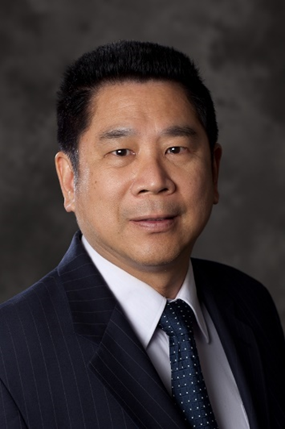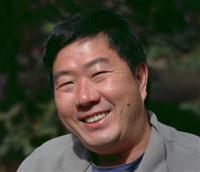|
|
特邀嘉宾
中国生物特征识别大会(Chinese Conference on Biometric Recognition,简称CCBR)是由中国人工智能学会(CAAI)主办的国内生物特征识别领域的学术盛会,第十四届中国生物特征识别大会(CCBR2019)将于2019年10月12~13日在湖南株洲举行。
应CCBR2019大会组委会的邀请,美国南加州大学C.-C. Jay Kuo教授,中国科学院自动化所谭铁牛研究员将于10月12日在大会上作主题演讲。IEEE生物识别理事会主席、英国南安普敦大学Mark Nixon教授,IEEE生物识别理事会副主席、香港浸会大学Pong C Yuen教授,将于10月13日在大会上作主题演讲。
| |
|
|
 |
|
|
|
C.-C. Jay Kuo
美国南加州大学杰出教授
IEEE\SPIE\AAAS Fellow
演讲题目:Towards Effective and Explainable Biometrics
Abstract: Deep learning provides state-of-the-art biometrics solutions when training and testing data share similar distributions and the number of training samples is sufficiently larger. The deep-learning-based solutions are mathematically intractable due to the non-convex optimization nature. Furthermore, their robustness is a main concern. To search for effective and explainable biometrics solutions is challenging yet essential. In this talk, I will present a path towards this direction and provide preliminary results using face recognition as an example. Instead of treating computational neurons as hidden units whose parameters are determined by end-to-end optimization, we interpret computational neurons as dimension reduction units, which are derived from the statistics of input data, and the non-linear activation operation as a rectifier used to resolve the sign confusion problem. Multiple convolutional layers are viewed as the cascade of multiple Saab (Subspace approximation with adjusted bias) transforms, and Saab coefficients can be used as features for decision making. We apply and compare several classifiers (e.g., the Support Vector Machine, the Least-Squared Regression and the Random Forest) in the high-dimensional feature space to achieve the face recognition task. Finally, insights will be drawn from this pioneering endeavor.
Biography: Dr. C.-C. Jay Kuo received his Ph.D. degree from the Massachusetts Institute of Technology in 1987. He is now with the University of Southern California (USC) as Director of the Media Communications Laboratory and Distinguished Professor of Electrical Engineering and Computer Science. His research interests are in the areas of media computing, compression and understanding. Dr. Kuo was the Editor-in-Chief for the IEEE Trans. on Information Forensics and Security in 2012-2014. Dr. Kuo received the 1992 National Science Foundation Young Investigator (NYI) Award, the 1993 National Science Foundation Presidential Faculty Fellow (PFF) Award, the 2010 Electronic Imaging Scientist of the Year Award, the 2010-11 Fulbright-Nokia Distinguished Chair in Information and Communications Technologies, the 2011 Pan Wen-Yuan Outstanding Research Award, the 2014 USC Northrop Grumman Excellence in Teaching Award, the 2016 USC Associates Award for Excellence in Teaching, the 2016 IEEE Computer Society Taylor L. Booth Education Award, the 2016 IEEE Circuits and Systems Society John Choma Education Award, the 2016 IS&T Raymond C. Bowman Award, the 2017 IEEE Leon K. Kirchmayer Graduate Teaching Award and the 2019 IEEE Computer Society Edward J. McCluskey Technical Achievement Award. Dr. Kuo is a Fellow of AAAS, IEEE and SPIE. He has guided 150 students to their Ph.D. degrees and supervised 30 postdoctoral research fellows. Dr. Kuo is a co-author of 14 books, 280 journal papers, 940 conference papers and 39 patents.
|
| |
|
|
 |
|
|
|
谭铁牛
中国科学院自动化所研究员
中国科学院院士、IEEE/IAPR Fellow
演讲题目:Recent Advances and Future Directions of Biometric Recognition
Abstract: Biometrics as a reliable personal identification method has been widely used in mobile devices, digital payment, border control, video surveillance, etc. This talk will review the latest progress of the most popular biometric modalities and figure out some promising research directions for the next generation biometrics. Focus will be given on our recent work on iris, face and gait recognition with some interesting demos such as mobile iris recognition, iris recognition at a distance, GAN (Generative Adversarial Networks)based face image super-resolution and photorealistic face rotation, cross-view gait recognition, etc.
Biography: Tieniu Tan received MSc and PhD degrees in electronic engineering from Imperial College London, U.K and received BSc degree in electronic engineering from Xi'an Jiaotong University, China. He returned to China in 1998 and joined the National Laboratory of Pattern Recognition (NLPR), Institute of Automation of the Chinese Academy of Sciences (CAS), Beijing, China, where he is currently a Professor and the director of Center for Research on Intelligent Perception and Computing (CRIPAC), and was former director (1998-2013) of the NLPR and Director General of the Institute (2000-2007). He is Member of the Chinese Academy of Sciences, International Fellow of the UK Royal Academy of Engineering, Fellow of The World Academy of Sciences for the advancement of sciences in developing countries (TWAS), Corresponding Member of the Brazilian Academy of Sciences, and Fellow of the IEEE and IAPR (International Association for Pattern Recognition). He is currently also Deputy Director of Liaison Office of the Central People's Government in the Hong Kong S.A.R. He has published 14 edited books or monographs and more than 600 research papers in refereed international journals and conferences in the areas of image processing, computer vision and pattern recognition. His current research interests include biometrics, computer vision and pattern recognition.
|
| |
|
|
 |
|
|
|
Mark Nixon
英国南安普敦大学教授
IEEE生物识别理事会主席、IAPR Fellow
演讲题目:A Future of Biometrics
Abstract: Biometrics has made amazing progress in its (relatively) short history. This speaker started his research in 1984, on face recognition, before it was even called biometrics. Then, computers were slow and memory was expensive, but we showed that identification was indeed possible. Fast forward to now, when computers are fast and memory is cheap: with modern tools we can now produce a laboratory system which can achieve recognition, and in an afternoon. Biometrics helps the lives of most people on this planet by its virtues of speed and convenience. So it is time to take stock on our progress. As biometrics researchers, where are we going, and where should we go? Deep learning has enabled fast and accurate processes but we need to learn more of the underlying science. Can we deploy this capability for identification elsewhere, say forensic science? Is the underlying question what is identity and what does it imply? This talk will aim to introduce these questions, in the context of my own work on gait and soft biometrics, though the solutions and answers remain for future work.
Biography: Mark Nixon is currently the President of the IEEE Biometrics Council and Vice Chair IEEE PSPB. He is a Fellow of the IET, Fellow of the IAPR (for services to biometrics and computer vision) and the Distinguished Fellow of the BMVA 2015. Also, he is the Professor in Computer Vision at the School of Electronics and Computer Science. His research interests are in image processing and computer vision. His team have helped to develop new techniques for static and moving shape extraction (both parametric and non-parametric) which have found application in automatic face and automatic gait recognition and in medical image analysis. They were early workers in face recognition, later came to pioneer gait recognition and later joined the pioneers of ear biometrics, and currently they are working on soft biometrics where they recognize people by human attributes.
|
| |
|
|
 |
|
|
|
Pong C Yuen
香港浸会大学教授
IEEE生物识别理事会副主席、IAPR Fellow
演讲题目:Is Face Recognition Secure?
Abstract: Face recognition technology has been successfully deployed in many practical applications, ranging from mobile devise logon to law enforcement domain. Electronic payment using face recognition was also selected as one of the ten breakthrough technologies by MIT Technology Review 2017. With the increasing of practical face biometrics applications, face recognition system security becomes a public concerns. In particular, it is important to study whether face recognition system can be spoofed by fake faces. This is called anti-spoofing. At the Black Hat Conference 2019, it was demonstrated the weakness and threat of Apple’s FaceID face recognition on mobile devices. In this talk, I will give an overview on different face presentation attacks (a.k.a face anti-spoofing), namely image, video and 3D mask. After that, I will share some of our recent research results in face anti-spoofing.
Biography: Pong C Yuen received his B.Sc. degree in Electronic Engineering with first class honours in 1989 from City Polytechnic of Hong Kong, and his Ph.D. degree in Electrical and Electronic Engineering in 1993 from The University of Hong Kong. He joined the Hong Kong Baptist University in 1993, and served as the Head of Department of Computer Science from 2011 – 2017. Currently he is a Professor at the Department of Computer Science and Associate Dean of Faculty of Science, Hong Kong Baptist University.
Dr. Yuen was a recipient of the University Fellowship to visit The University of Sydney in 1996. In 1998, Dr. Yuen spent a 6-month sabbatical leave in The University of Maryland Institute for Advanced Computer Studies (UMIACS), University of Maryland at College Park. From June 2005 to January 2006, he was a visiting professor in GRAVIR laboratory (GRAphics, VIsion and Robotics) of INRIA Rhone Alpes, France. From July 2017 to January 2018, he was a visiting faculty at the ETH, Zurich. Dr. Yuen was the director of Croucher Advanced Study Institute (ASI) on biometric authentication in 2004 and the director of Croucher ASI on Biometric Security and Privacy in 2007. He has been serving the Director of IAPR/IEEE Winter School on Biometrics since 2017.
Dr. Yuen has been actively involved in many international conferences and professional community. He was the track co-chair of the International Conference on Pattern Recognition (ICPR) 2006, the program co-chair of the IEEE Fifth International Conference on Biometrics: Theory, Applications and Systems (BTAS) 2012, the IEEE International Conference on Identity, Security and Behavior Analysis (ISBA) 2016, the International Conference on Pattern Recognition and Artificial Intelligence (ICPRAI) 2018, program co-chair of the International Workshop on Information, Forensics and Security (WIFS) 2018. He served as Associate Editor of IEEE Transactions on Information Forensics and Security from 2014 - 2018, and received the Outstanding Editorial Board Service Award in 2018. Currently, Dr. Yuen is the Vice President (Technical Activities) of the IEEE Biometrics Council, Editorial Board Member of Pattern Recognition, and Senior Editor of SPIE Journal of Electronic Imaging. He received the first-prize and second-prize Natural Science Awards from the Guangdong Province and the Ministry of Education, China, respectively. He is a Fellow of IAPR.
|
|



